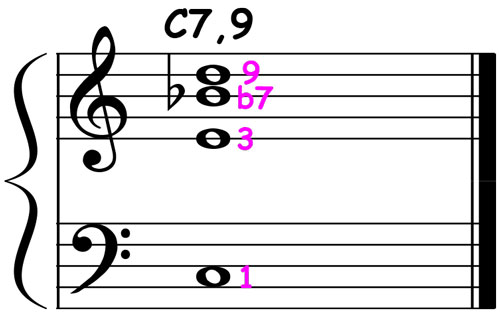For an open sound that works great for Jazz Blues, drop “the 5” and play the two definitive tones (3, b7) plus “the 9″…
Dominant 7 Chord add 9 drop 5 Voicing


Homework
Using your ears and knowledge of scales and chord structure, “transpose” this voicing to all spellings in three musically-useful patterns:
- Chromatically Ascending: C > Db > D > Eb > E > F > Gb > G > Ab > A > Bb > B > C.
- Chromatically Descending: C > B > Bb > A > Ab > G > Gb > F > E > Eb > D > Db > C.
- Cycle of Dominants: C > F > Bb > Eb > Ab > Db > Gb > B > E > A > D > G > C.
Doing so will develop an enormous chord vocabulary that you will know by ear, intellect, eye, and muscle… laying a rock solid foundation for fluent improvisation.

Leave a Reply